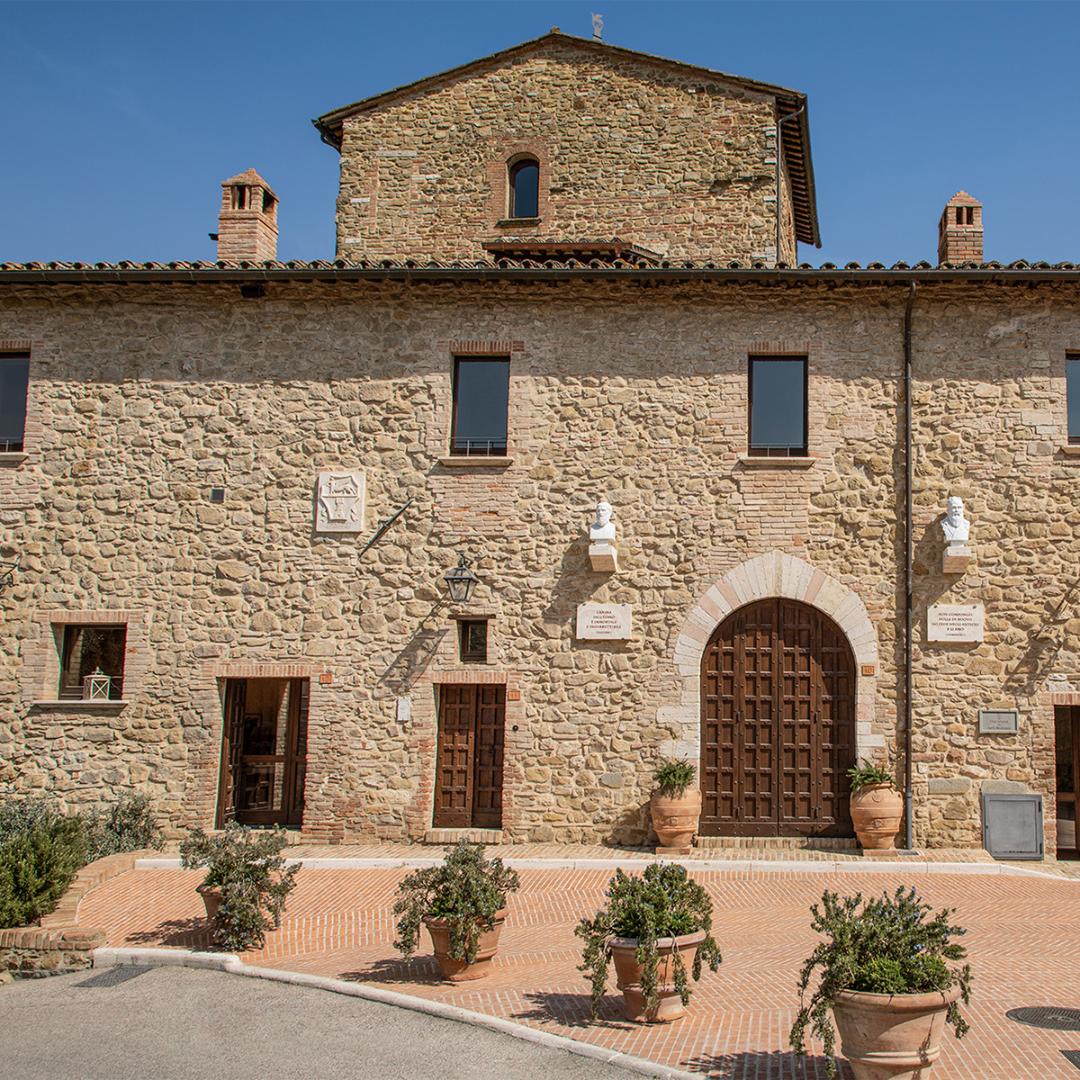Solomeo
Let’s discover Solomeo and its incredible history: the small medieval village in the Municipality of Corciano, in the province of Perugia, it became a concrete dream of the Umbrian businessman Brunello Cucinelli, known in all over the world as “the king of cashmere”, which took him back to its former glory. Today this village, with its castle and its narrow streets covered by tiled bricks, is a green island dedicated to the culture, art, tradition, history and beauty.
The village of soul
Solomeo’s trip starting from Piazza della Pace and from Foro delle Arti, built by Umbrian master craftsmen inspired by British artists William Morris and John Ruskin.
The Brunello Cucinelli Theatre is the central monument of the complex whose figure resumes the Farnese of Parma and the ancient theatre of Sabbioneta. It can accommodate over 200 places including those ones in the stands of the cavea below the gallery.
Attached to the structure you find the “Giardino dei Filosofi” (Garden of Philosophers), a set of terraces on the hilly landscape, excellent for meditation, the Gymnasium, the Amphitheatre and the New Humanistic Academy, born to promote “the treatment of the human value”, which contains the Aurelian New Humanistic Library, place of cultural meetings dedicated to the study of philosophic, historic, literary and artistic topics, and full of ancient and modern books.
This village also contains the School of Arts and Crafts, created with the will to convey to the new generations the value of the craftsmanship heritage and of the manual creativity. This School offers its students classes of female Pattern Making and Tailoring, of male Cutting and Tailoring, of Mending and Stitching, of Horticulture and Gardening and of Wall Arts.
There’s also the parish church of San Bartolomeo, founded in XII century, rebuilt in ‘700 and at the end expanded in’800. Inside you find a precious organ of the eighteenth-century.
The town is surrounded by a green belt of 100 hectares divided in several sections: it’s the so-called “lovely suburb” in the process of transformation recovering a part of the ground already occupied by old disused factories in favour of trees and orchards. Meadows now look like paintings among hills and recall Umbrian medieval and renaissance landscapes of the Perugino’s and Piero Della Francesca’s pictures.
Here the industrial park, the laic oratory where you can take up creative energies and unzip stress, the farm park dotted with vineyards. Can’t miss the crusher and the cellar with the statue of Bacco, situated at the entrance and visible from all directions and from Solomeo, which symbolizes the Greek origin of the good relationship between man and landscape.
In the end the park of dignity, where the central element is represented by a monument of five arches in which stands out the slogan “Tributo alla dignità dell’uomo” (Tribute to the human dignity).
I
































